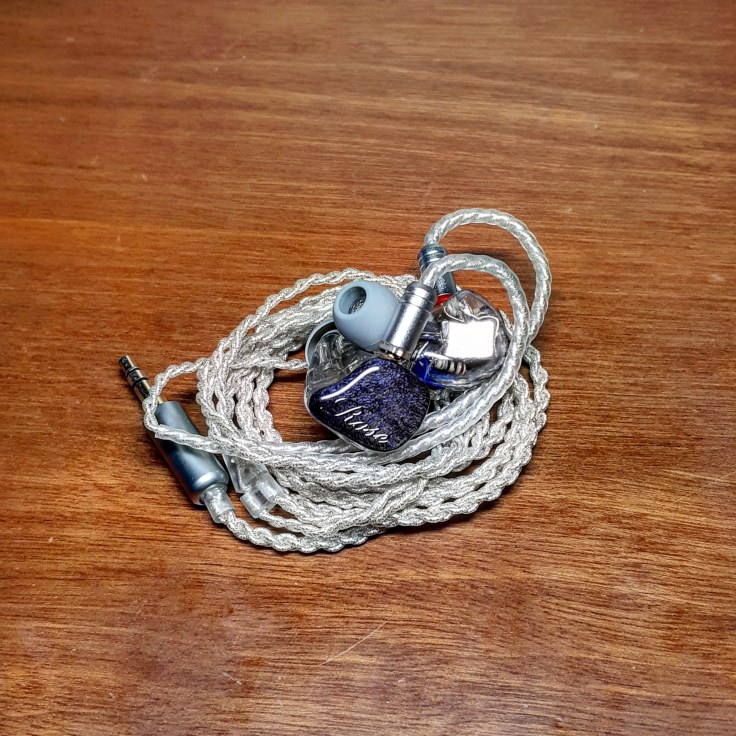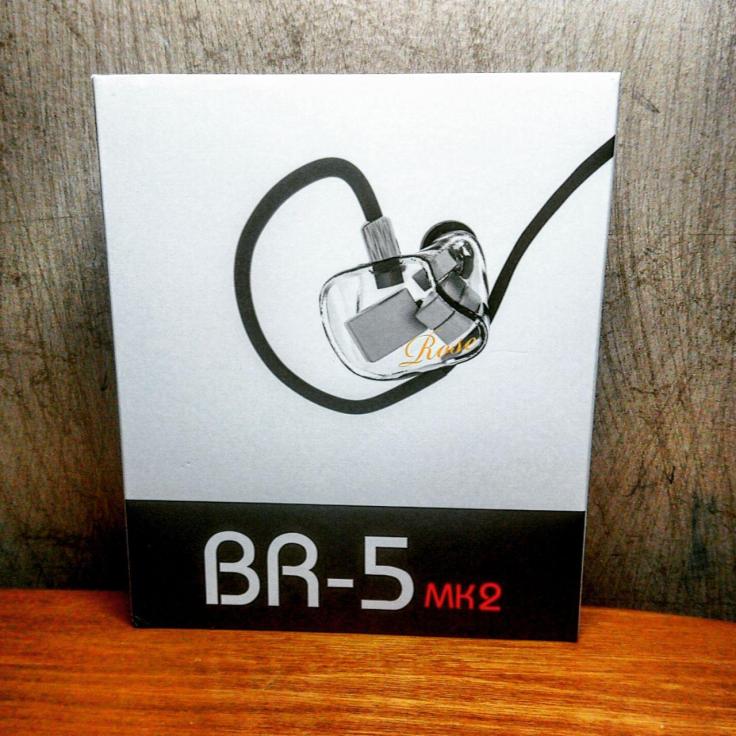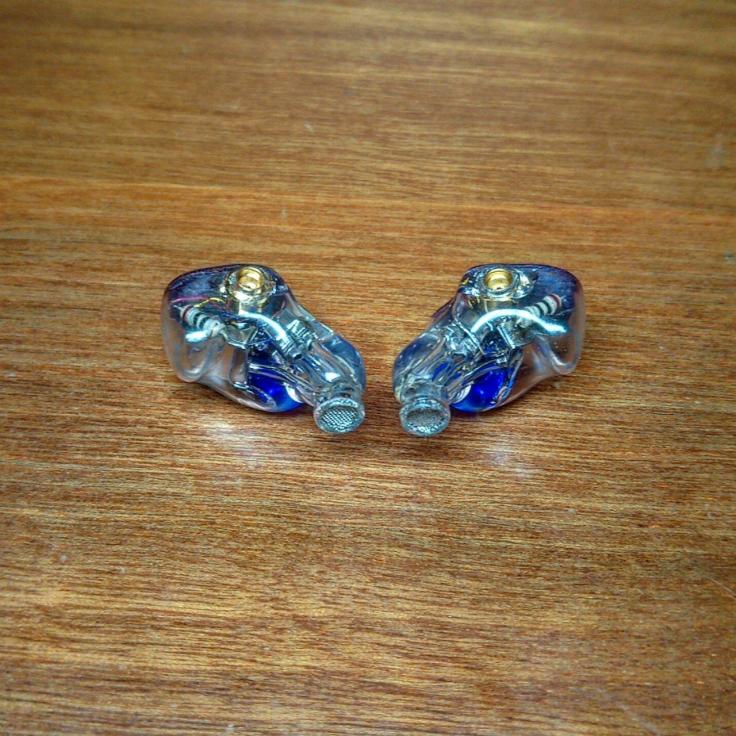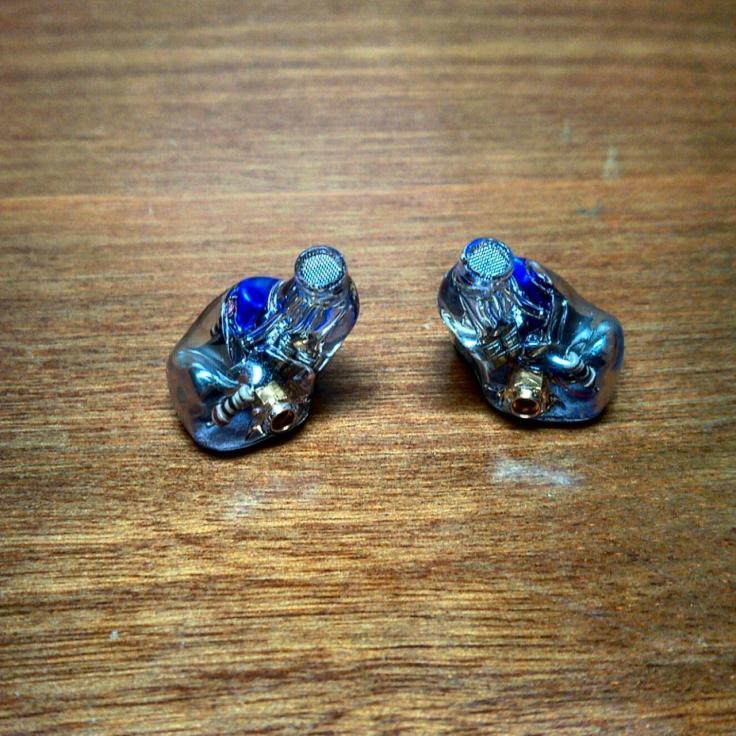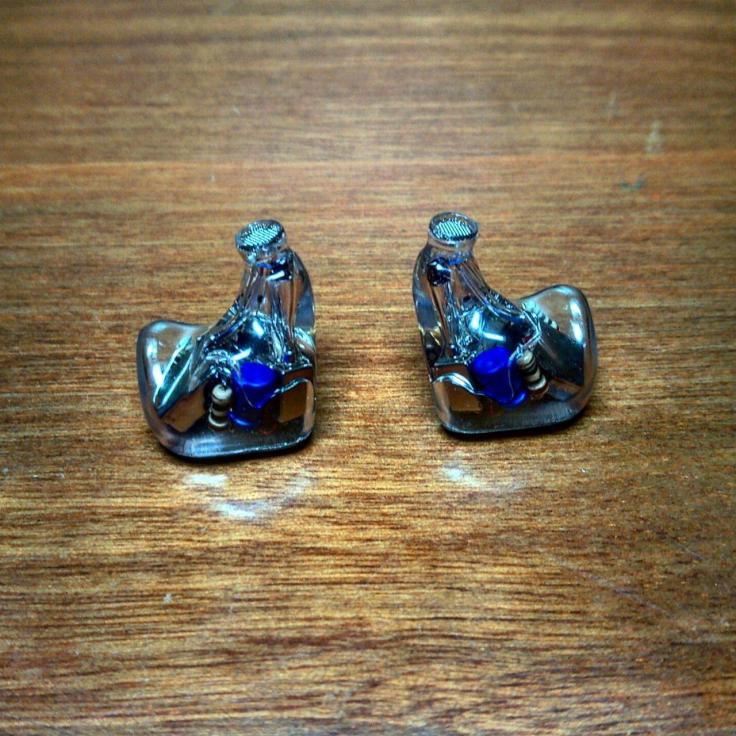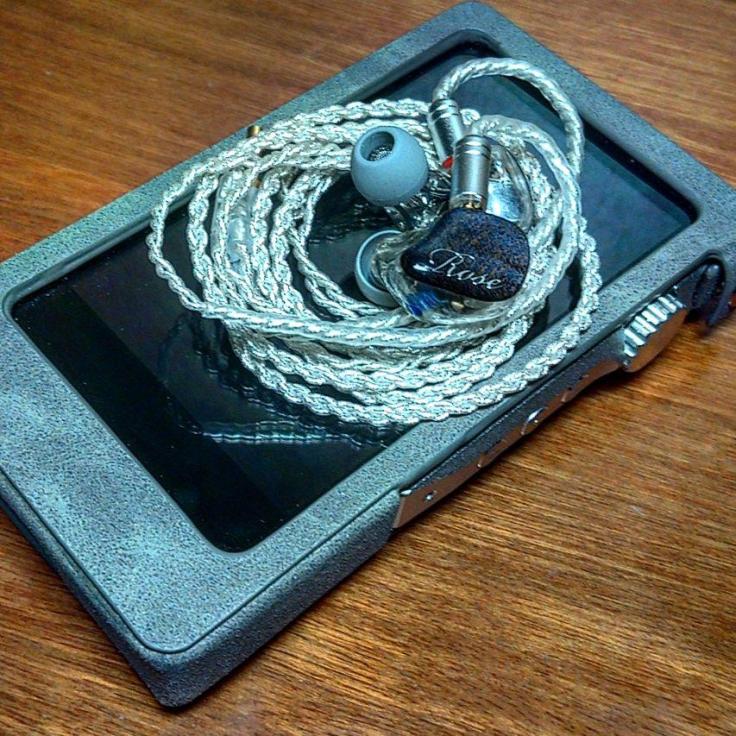Preamble:
Originally posted on my German audio review site, the "
Kopfhörer-Lounge", here comes the re-post of my review of the Rose Technology BR-5 MKII.
Introduction:
“Rose Technology” is probably not the most commonly known name in the audio industry, but they are at least somewhat known among in-ear enthusiasts, especially those who are more familiar with less mass-market oriented Asian brands.
While they are still a rather new company on the market, they offer a rather broad range of products, including multi-BA (especially noteworthy is their tiny, affordable and great sounding
Mini2 that I reviewed as well), hybrid and dynamic driver in-ears, as well as dynamic driver earbuds.
Rose Technology’s quintuple-BA in-ear, the BR-5, was recently updated and re-tuned, and is now known as the “
BR-5 MKII”. Despite featuring quality drivers from Knowles and Zsound (a name that I have never heard and that I cannot find anything about, however apparently manufacturers such as FitEar have used it in their four-digit price range models) and being hand-made, it retails for a quite moderate price of around US$300 – and what is also somewhat special is that Rose, among only
very few manufacturers of universal fit in-ears, offers several customisation options for the shell colour and faceplate material/colour, although not to the degree of options some of those manufacturers offer (due to being hand-made and customisable, it however also means that customers need to wait around two to four weeks until the in-ear is built).
What the BR-5 MKII sounds like, how it performs and how it compares to a few other multi-BA in-ears is what this exact review is all about.
Before I continue, I would like to thank Rose Technology and Penon Audio for finally making this review happen. Although I received the in-ears at no cost, my words remain true and honest, and I was not given any guidelines or requirements for the review, no matter whether it might turn out positively or negatively.
Technical Specifications:
Price: $305 (
https://penonaudio.com/Rose-BR5-MKII)
Drivers: Balanced Armature (5x per side, triple-bore configuration)
Acoustic Ways: 3
Impedance: 14 Ohms @ 1 kHz
Sensitivity: 112 dB SPL @ 1 mW @ 1 kHz
Frequency Range: 14 Hz – 22 kHz
Delivery Content:
Rather surprisingly since Rose is a quite small company, the BR-5 MKII comes in a nice cardboard box that is covered by a properly designed and printed cardboard sleeve. Big thumbs up for that, it looks professional!

Inside the box, one can find the same cable and protective carrying case that already came with the
Mini2, along with the in-ears, a shirt clip, storage pouch, three pairs of grey single-flange silicone tips, one pair of foam tips, three pairs of white single-flange silicone tips, and last but not least one pair of double-flange silicone tips.

While there could have been more sizes of foam and double-flange tips, the delivery content and presentation is generally nice, especially considering that Rose is a small company.
 Looks, Feels, Build Quality:
Looks, Feels, Build Quality:
As I already mentioned, some customisation options are available for the BR-5 MKII, which is nice to see since only very few manufacturers offer that for their universal fit in-ears.
When I was asked what I would prefer, I replied that green wooden faceplates would look nice. And so I received green coloured wooden burl faceplates with transparent acrylic housings.

The faceplate wood’s colours are rather dark and therefore unobtrusive, which is nice. It is also nice to be able to see the fine natural wood grain upon close inspection.
Transition between the faceplates and transparent acrylic bodies is very smooth and clean, without any visible or tactile seam. The same goes for the finish of the shells – it is smooth, even and without any flaws.
However upon close inspection, the transparent shells appear slightly “dusty” looking under strong artificial lighting and a few small scratches are visible inside the shells (the outside is super even and smooth though). While it is no big deal (to me at least), it does however make the shells look a little “dirty”.

Since the shells are clear, one can also see the drivers, tubes and other used components. For example, the three individual acoustic bores that are behind the protective metal mesh nozzle filter can be seen, along with the acoustic dampers for the woofer and what seem to be the midrange drivers.
The electric crossover is visible as well – it is undeniably a simple implementation, however what is surprising is that instead of using micro components, Rose chose to use a full-size resistor and capacitor instead. While not necessary, I think that this looks visually nice and is an interesting, cool quirk (and while the internal wiring isn’t the tidiest I have seen, it is nice to see it being done relatively symmetrical on both sides).
Speaking of interesting quirks, the side markers are not what you usually find on an in-ear. They are not letters or coloured dots – instead, each side’s side marker is a coloured rhinestone. That’s right, a small, coloured rhinestone, which is rather cool and unique.

Shape-wise, the BR-5 MKII’s housings resemble the typical C-UIEM/CIEM demo model shape, however with their own design touches such as the more squared appearing faceplates and the rather long, relatively deep fitting bodies and nozzles.
- - -
The cable that is included is basically the same one that comes with the
Mini2, except for somewhat different MMCX connectors.
It consists of four twisted conductors and is silver in colour, with good build quality, flexibility and sturdiness. It also features a chin-slider above the y-splitter.
Comfort, Isolation:
The BR-5 MKII is intended to fit deeper than most universal fit in-ears, however not as deep as
Etymotic’s models.
Due to the slightly wider than average nozzles that go into your ear canals, it is advised to have at least averagely sized ear canals – people with small ear canals might be able to get a good fit and seal, however probably not at the correct insertion depth.
Once you have found the tips that match your ear canal size, comfort is good and the ergonomic shape should make the in-ears fit like a glove (in most ears at least, mine anyway). Shape-wise, Rose did a good job wherefore the BR-5 MKII is a nicely and comfortably fitting in-ear.
Due to the good twisted cable and typical over-the-ear design, microphonics are basically not present at all.
By the way, the ear guides don’t have any memory wire inside. Instead, they automatically adjust to your ear’s shape.
Since the shells are closed, external noise isolation is fairly good, as it could also be expected.
Sound:
My main sources for listening were the
iBasso DX200 (
AMP1 module) and
Stoner Acoustics UD125.
I used the largest included white single-flange tips for listening most of the time.
Tonality:
Describing the BR-5 MKII, “balanced with bright, airy upper mids and a general presentation that is heading a bit more into the bright territory” is what comes into my mind. A tuning that is almost “typical” for many Asian in-ears, especially hybrid models, however quite rarely found in multi-BA implementations. Not anymore, since the Rose BR-5 MKII is now another contender that has a midrange that is tuned for an upper midrange elevation that adds clarity and airiness, and something that many lovers of music that contains female vocals prefer.
Friends of a rather neutral bass presentation should be pleasantly pleased, since the BR-5 MKII sports a fairly flat bottom-end with just slightly more quantity (+2 dB) compared to the
Ultimate Ears Reference Monitors or
Audiofly AF1120 while the bass is ca. 5 dB more present when compared to the
Etymotic ER-4S/
SR, an in-ear that follows a diffuse-field flat bass tuning, something that is rather rarely found. Therefore one will not find much added thickness, warmth or fullness when listening to the Rose Technology in-ear at all. Instead, a nicely balanced bass that is fairly neutral with the right balance between flatness naturalness is presented.
Bass doesn’t start climbing before 500 Hz wherefore it stays nicely out of the midrange without adding its own flavour to lower male vocals. It then reaches its climax somewhere between 100 and 200 Hz, and doesn’t show any real roll-off towards the actual sub-bass although one should not expect much rumble from a more neutral presentation anyway – the sub-bass is flawlessly present nonetheless (which is also audible when playing recordings that reach this low), however not in the foreground.
The midrange is what a couple of (primarily) Asian in-ears are tuned for, however most of them are hybrid models. The BR-5 MKII on the other hand is a multi-BA in-ear and among few models that are tuned for the same midrange characteristics.
From 1 towards 3 kHz, one can spot an evenly climbing elevation that adds brightness and clarity to the midrange. While it does make the presentation appear less flat and accurate in terms of the original meaning of “hi-fi” and adds some colouration to rather deep male vocals that appear a bit thinner and brighter than they actually are, it also highlights female vocals (as well as rather bright male voices), making them sound airier, clearer and stand out more without adding any colouration to them (well, as long as they aren’t deep female vocals). A tuning that is, as mentioned, commonly preferred by female vocal lovers.
This elevation is by the way a bit less intense compared to the hybrid
DUNU DK-3001 in-ear that is also tuned for a brighter, airy upper midrange.
The treble shows an emphasis around 6 kHz that is not too narrow however maybe a tad too strong for people who are sensitive in this area. Above, the highs are relatively even and flat with only one other additional peak located at 15 kHz where it doesn’t really matter anymore anyway (super treble extension above 10 kHz is by the way great).
This 6 kHz emphasis makes the treble timbre sound a bit shifted and sometimes even a bit sharp while fortunately avoiding sibilance in the vocal range. Yes, brighter instruments are a bit shifted towards the leaner and brighter side as a result, which adds more airiness and transparency, however at the logical cost of some naturalness and evenness. Nonetheless the elevated 6 kHz range goes rather well with Classical music where violins are only a touch unnatural but in return gain more air, distinguishability and presence (not much unlike the
Sennheiser HD 800’s middle treble presentation although a bit less refined and even).

Except for the 6 kHz elevation that can be a bit too strong and sharp at times and adds some colouration and brightness, the tuning is harmonious and well-made wherefore Rose Technology, just as with the
Mini2, proves that they understand what their customers want and can transpose that tuning.
So to sum it up, the Rose BR-5 MKII is an in-ear tuned for people who like a quite balanced presentation with elevated upper midrange (especially loved and desired by friends of female vocals) and a generally rather bright, airy tuning.
Resolution:
Bass response is very good – it is fast and excellently controlled with good definition and just slightly added body due to the vented woofer without adding any softness. Good job.
As one could expect as a result of the tuning, the midrange has got a revealing and airy touch and character to it, however even when equalised for a flat presentation, it sounds detailed and small nuances are easy to pick up and distinguish from each other wherefore the BR-5 MKII fits perfectly into the category of good sub-$500 in-ears without rivalling models that enter the four-digit price range.
Treble details don’t fall behind either but are present, with notes that are quick, precise and sharply separated from each other even when EQ’d down for a flatter presentation.
Sure, the 6 kHz range is a bit intrusive, however due to its proper resolution, the BR-5 MKII can pull it off even though it can sometimes be on the border of beginning sharpness.
To wrap it up, Rose’s quintuple-BA creation resolves well, is coherent and fits right into the range of other well-resolving multi-BA in-ears priced below $500 with good performance while not achieving the same amount of plasticity and very last micro details as some of the more expensive multi-BA models on the market, however most of them cost considerably more than the BR-5 MKII (law of diminishing returns and stuff).
Soundstage:
Rose Technology’s in-ear portrays a relatively spacious soundstage that is among the better models in its price range, however not unrivalled anymore these days where spatially convincing and three-dimensional sounding multi-BA in-ears between $200 and $500 do exist, as opposed to a few years back when most universal fit models didn’t have the most realistic and authentic spatiality.
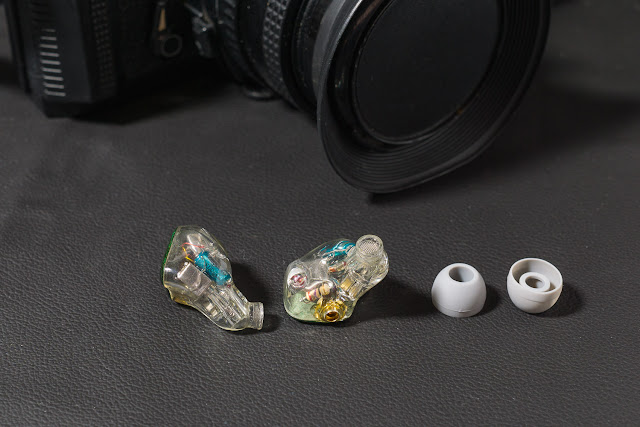
When it comes to spatial width, the BR-5 MKII slightly leaves the base between my ears. Some spatial depth is also present and the Rose is capable of reproducing individual layers as well, nonetheless the presentation appears overall rather wide than deep and while the lateral basis leaves my head, front projection does not really go further than my nose at max.
Separation and layering are good as well as clean, although not perfect, and the presentation also appears nicely authentic and rather three-dimensional, nonetheless the BR-5 MKII does not reach the spatially best in-ears in its class despite trumping several other models and coming reasonably close.
---------
In Comparison with other Multi-BA In-Ears:
NocturnaL Audio Atlantis (UIEM):
The Atlantis is a handmade universal fit in-ear that can be customised as well, however there are more advanced customisation options available compared to the BR-5 MKII. Price- and performance-wise, the Atlantis plays in a higher league though.
The Atlantis has got the more pronounced, smoother and warmer bass presentation with fuller but still natural and realistic sounding lower mids. Except for that, the NocturnaL has got the more linear and more hi-fi-compliant midrange.
When it comes to treble tuning, the Atlantis is more neutral compared to the BR-5 MKII that heads more into the bright territory, and as a result the Atlantis is result more even, realistic and authentic sounding in the highs. The Rose has the edge when it comes to super treble extension though.
The BR-5 MKII has got the slight upper hand when it comes to bass tightness with impactful tracks, however speed and control are pretty much on the same level. When it comes to bass details, layering and texture though, the Atlantis is playing in a higher league.
When it comes to detail retrieval, micro details, separation and layering in the mids and treble though, wunderkind and >$1000-IEM-challenger Atlantis is a good bit ahead.
The same goes for the soundstage where the NocturnaL in-ear doesn’t only have the larger (in all directions), but also more precise, better layered and cleaner separated soundstage with a higher level of authenticity and precision.
Custom Art Ei.3 (UIEM):
Upon special customer request, a UIEM version of the Ei.3 that can be customised as well is available from Custom Art. Being priced around the same, it however offers a few more advanced customisation options (that are partially only available at an upcharge though) than the BR-5 MKII.
The Ei.3 has got slightly more bass impact and sounds a little warmer in the lower midrange.
The BR-5 MKII has got elevated, bright upper mids while the Custom Art’s are more neutral.
The Rose has got the brighter treble tuning, especially in the middle highs. Solely between 7 and 8 kHz it is the Ei.3 that is a little more forward. As a result the Custom Art in-ear sounds more realistic and natural in the treble in comparison though whereas the Rose is more tuned for a bright, airy presentation.
The Rose features the somewhat faster and tighter bass whereas the Ei3’s is more body-focussed. In terms of control both aren’t far apart although the Rose ultimately takes the lead.
When it comes to midrange, both are roughly comparable with the Rose being a little ahead.
In terms of treble though, the BR-5 MKII shows an advantage in separation and details.
The Ei.3 has got the slightly wider soundstage to my ears while depth is comparable, although a bit more pronounced on the Polish triple-driver in-ear as well.
Instrument separation is about comparable between the two models while layering and reproducing “empty space” is where the Custom Art Ei.3 slightly takes the lead.
Pai Audio MR3:
The MR3 that was a spontaneous blind purchase of mine that turned out to be a very nice and pleasant surprise. It now retails for around $200 and is available in different colours (a few months ago Pai Audio mentioned that they were in the process of building a lab to manufacture CIEMs, however I don’t know if it is already fully up and running or not yet) whereas the BR-5 MKII’s shells can be fully customised.
Both in-ears have got similar levels of bass with the MR3 being just ever so slightly more forward in the lower midrange.
The Pai Audio in-ear has got a quite neutral midrange presentation whereas the Rose’s is tuned brighter and to favour female and bright voices more.
Between 3 and 8 kHz, the Pai is less bright and mostly lacks the 6 kHz elevation wherefore its treble sounds overall more realistic in comparison although not perfect either (it’s also got an elevation in the middle highs although with less quantity). Solely the Pai’s upper highs before 10 kHz are more pronounced.
The Rose’s bass appears ever so slightly faster while control, details and tightness are on the same level.
In terms of midrange resolution, the BR-5 MKII has got an ever so slight edge over the Pai that on the other hand features the slightly superior treble separation. Overall both in-ears are extremely close though.
The Rose’s soundstage is a little wider while the MR3’s features slightly more spatial depth as well as the slightly more authentic presentation with the somewhat more precise layering and portrayal of “emptiness”.
Logitech/Ultimate Ears UE900:
The UE900 used to be sold for around $400 (that it is definitely worth, sound- and performance-wise), but can now be found for less than $200 – a massive price drop that is always the case when Logitech discontinues the production of their audio products (in case of the UE900, it doesn’t seem to be the case for the American market, however for the European where it isn’t listed anymore).
Both have got pretty much the same amount of low-end elevation compared to a diffuse-field flat in-ear, however the UE900 appears a little more impactful, but can also portray sub-bass notes with a bit more authority although neither has got a sub-bass roll-off.
In the midrange, one could definitely say that the Rose is the “Anti-UE900”, having a bright, elevated upper midrange compared to the UE whose root bleeds more into the midrange in comparison and whose upper midrange/presence range is recessed for a darker vocal presentation.
The UE’s treble is more laid-back and except for a snappy peak in the upper highs that however doesn’t cross the ground/reference line at all, it doesn’t have added brightness in the treble.
The Rose has got the slightly tighter bass while speed and control are absolutely on the same good level. When it comes to midrange details though, the BR-5 MKII appears somewhat more layered and can present fine details better.
(Upper) Treble separation is slightly sharper and more precise on the UE900 while the Rose appears to be more resolving due to more quantity in the lower and middle highs although the Logitech/Ultimate Ears in-ear is overall slightly ahead in terms of treble definition.
The BR-5 MKII has got the larger, more three-dimensional, more authentic soundstage. The UE900 doesn’t have much layering while the Rose has got some.
Instruments are about comparably separated with a slight advantage on the Rose’s side due to slightly more space between and around individual notes and instruments.
Conclusion:
The Rose BR-5 MKII is
the multi-BA in-ear dedicated to those who like a balanced sound that is leaning a bit more towards the brighter side, with an elevated, bright and airy upper midrange presentation (for example, a good amount of people I encountered who like female vocals prefer this kind of tuning – so the Rose BR-5 MKII would likely be a good choice in those cases).
It presents all of that with ample amounts of details and a nice soundstage presentation that, while it doesn’t rival the very best in-ears in this category, trumps several competitors in terms of three-dimensionality.

The in-ear’s only flaw is the slightly too energetic 6 kHz elevation that takes some realism and evenness from the treble while adding clarity and air, as well as some minor criticism when it comes to the visual finish.


